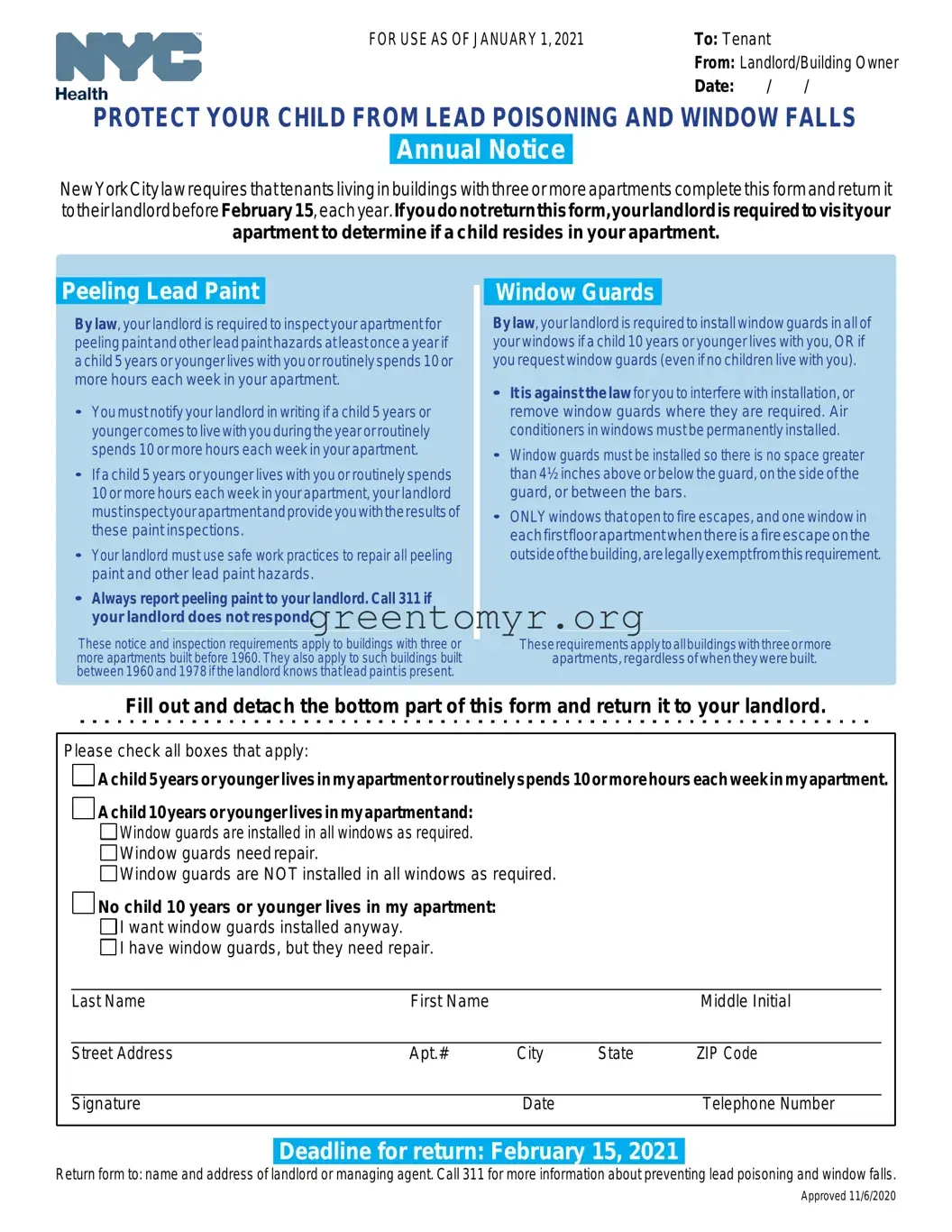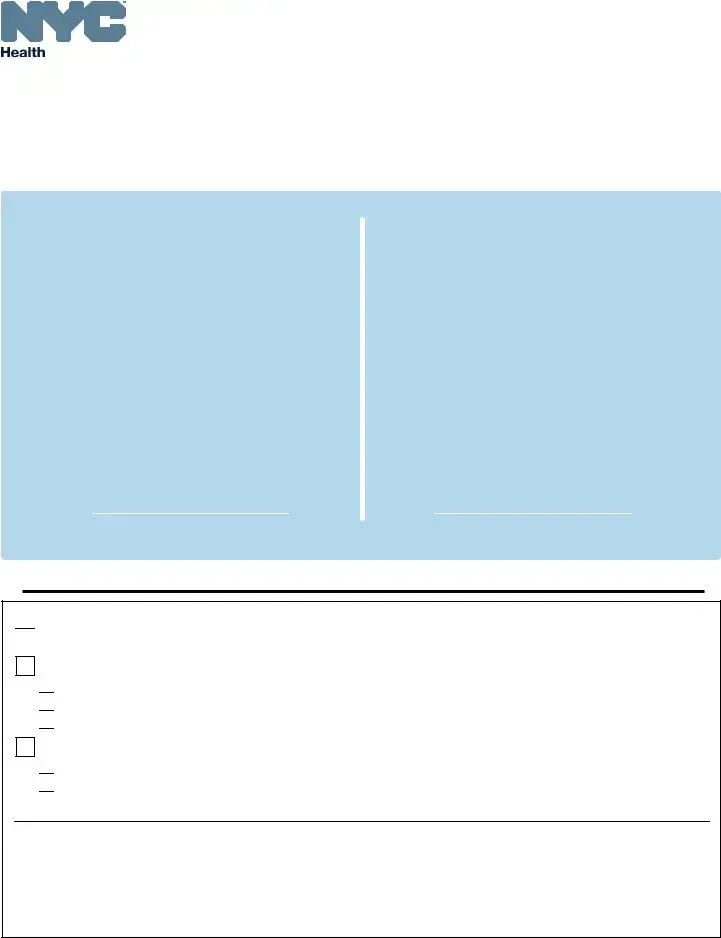FOR USE AS OF JANUARY 1, 2021 |
To: Tenant |
|
|
From: Landlord/Building Owner |
|
Date: |
/ |
/ |
PROTECT YOUR CHILD FROM LEAD POISONING AND WINDOW FALLS
Annual Notice
New YorkCity law requires that tenants living in buildings with three or more apartments complete this form and return it totheirlandlord before February15,each year.Ifyoudonotreturnthisform,yourlandlordisrequiredtovisityour apartment to determine if a child resides in your apartment.
Peeling Lead Paint
By law, your landlord is required to inspect your apartment for peeling paint and other lead paint hazards at least once a year if a child 5 years or younger lives with you or routinely spends 10 or more hours each week in your apartment.
•You must notify your landlord in writing if a child 5 years or younger comes to live with you during the year or routinely spends 10 or more hours each week in your apartment.
•If a child 5 years or younger lives with you or routinely spends 10 or more hours each week in your apartment, your landlord must inspect your apartment and provide you with the results of these paint inspections.
•Your landlord must use safe work practices to repair all peeling paint and other lead paint hazards.
•Always report peeling paint to your landlord. Call 311 if your landlord does not respond.
These notice and inspection requirements apply to buildings with three or more apartments built before 1960. They also apply to such buildings built between 1960 and 1978 if the landlord knows that lead paint is present.
Window Guards
By law, your landlord is required to install window guards in all of your windows if a child 10 years or younger lives with you, OR if you request window guards (even if no children live with you).
•It is against the law for you to interfere with installation, or remove window guards where they are required. Air conditioners in windows must be permanently installed.
•Window guards must be installed so there is no space greater than 4½ inches above or below the guard, on the side of the guard, or between the bars.
•ONLY windows that open to fire escapes, and one window in each first floor apartment when there is a fire escape on the outsideof thebuilding,arelegallyexempt from thisrequirement.
These requirements apply to allbuildings with three or more apartments, regardless of when they were built.
Fill out and detach the bottom part of this form and return it to your landlord.
Please check all boxes that apply:

 A child 5 years or younger lives in my apartment or routinely spends 10 or more hours each week in my apartment.
A child 5 years or younger lives in my apartment or routinely spends 10 or more hours each week in my apartment.
A child 10 years or younger lives in my apartment and:

 Window guards are installed in all windows as required.
Window guards are installed in all windows as required.

 Window guards need repair.
Window guards need repair.

 Window guards are NOT installed in all windows as required.
Window guards are NOT installed in all windows as required.
No child 10 years or younger lives in my apartment:

 I want window guards installed anyway.
I want window guards installed anyway.

 I have window guards, but they need repair.
I have window guards, but they need repair.
Last Name |
First Name |
|
|
Middle Initial |
|
|
|
|
|
Street Address |
Apt.# |
City |
State |
ZIP Code |
|
|
|
|
|
Signature |
|
Date |
|
Telephone Number |
Deadline for return: February 15, 2021
Return form to: name and address of landlord or managing agent. Call 311 for more information about preventing lead poisoning and window falls.



 A child 5 years or younger lives in my apartment or routinely spends 10 or more hours each week in my apartment.
A child 5 years or younger lives in my apartment or routinely spends 10 or more hours each week in my apartment.
 Window guards are installed in all windows as required.
Window guards are installed in all windows as required.
 Window guards need repair.
Window guards need repair.
 Window guards are NOT installed in all windows as required.
Window guards are NOT installed in all windows as required.
 I want window guards installed anyway.
I want window guards installed anyway.
 I have window guards, but they need repair.
I have window guards, but they need repair.